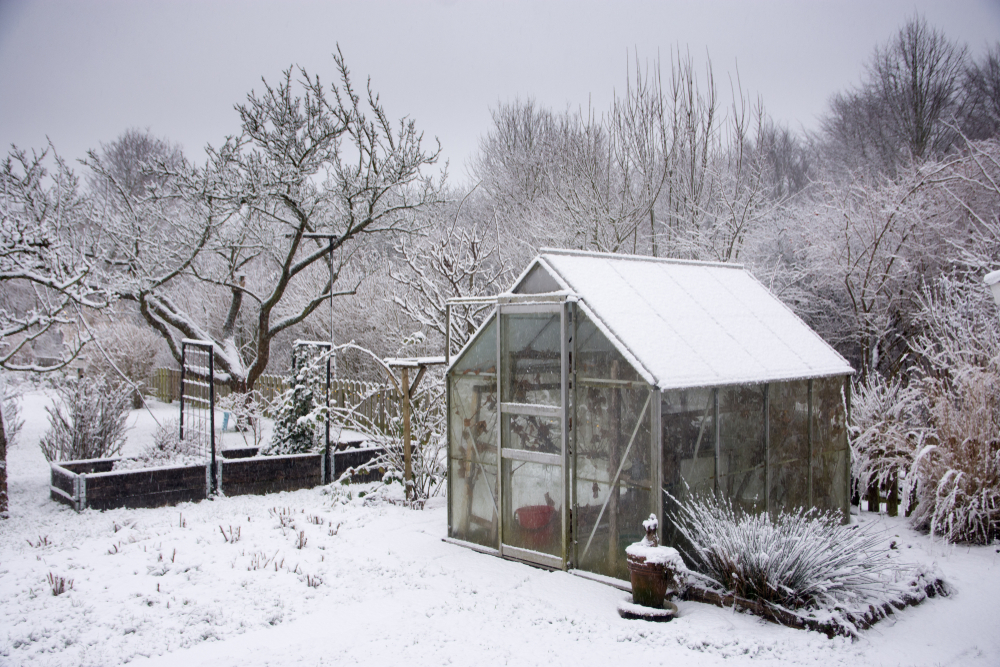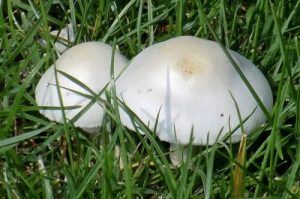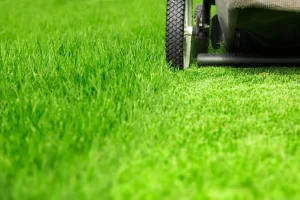Imagine stepping into your greenhouse on a chilly morning only to find your plants struggling against the cold. As a passionate gardener, you know how crucial it is to maintain a warm environment for your plants, especially at night.
But how do you ensure that your greenhouse stays cozy when temperatures drop? This guide will reveal simple yet effective strategies to keep your greenhouse warm and your plants thriving. You’ll discover how to harness the power of insulation, the magic of thermal mass, and even the benefits of a well-positioned heater.
Ready to unlock the secrets to a warmer greenhouse? Keep reading to transform your nighttime gardening challenges into success stories.
Insulation Techniques
Install thermal curtains to trap heat inside the greenhouse during cold nights. Use bubble wrap on windows for extra insulation. Consider adding a small heater for consistent warmth. These techniques help plants thrive by maintaining a stable temperature.
Insulation Techniques are vital for maintaining warmth in your greenhouse at night. They help trap heat and prevent cold air from seeping inside. Using the right materials can make a significant difference. Here are two effective insulation methods that can help keep your plants cozy.Bubble Wrap
Bubble wrap is an affordable and efficient way to insulate your greenhouse. The air pockets in bubble wrap create barriers that trap heat. Wrap it around the inside walls of your greenhouse. This technique reduces heat loss and keeps your plants warm. Secure the wrap with tape or clips to ensure it stays in place. Choose bubble wrap with larger bubbles for better insulation. This method is easy and requires minimal effort to implement.Thermal Curtains
Thermal curtains offer a practical solution for insulation. They are made from thick material designed to retain heat. Hang these curtains over the greenhouse windows during the night. They act as a shield against cold air. This method is effective in reducing heat loss through glass surfaces. During the day, simply pull the curtains back to allow sunlight in. Choose curtains with a reflective surface for added insulation. This helps keep the greenhouse warmer, ensuring plants thrive.
Credit: www.instagram.com
Heating Options
Solar panels and thermal mass are effective ways to keep a greenhouse warm at night. Insulating materials like bubble wrap help maintain heat. Small heaters or hot water pipes can also provide warmth during colder nights.
Keeping your greenhouse warm at night is crucial for nurturing your plants and ensuring they thrive even when temperatures drop. Heating options vary widely, each with its own benefits and considerations. Let’s explore some of the most effective ways to keep the chill out and the warmth in.Electric Heaters
Electric heaters are a popular choice due to their ease of use and consistent heat output. They are ideal for small to medium-sized greenhouses. A simple plug-in model can make a big difference, and many come with thermostats for precise temperature control. Consider models with safety features like automatic shut-off to prevent overheating. You might find the initial cost manageable, but keep an eye on your electricity bill.Propane Heaters
Propane heaters provide robust warmth and are great for larger greenhouses. They are portable and can be moved wherever heat is needed most. Ensure adequate ventilation to prevent harmful gases from accumulating. This option might require an upfront investment, but propane is generally cost-effective for long-term use. Have you ever felt the cozy glow of a propane heater on a chilly night? It’s a comforting reminder of the power of simple technology.Solar Heaters
Harnessing the sun’s energy, solar heaters are an eco-friendly way to keep your greenhouse warm. While they might require a larger initial setup, they offer a sustainable solution with minimal ongoing costs. You can use solar panels to power fans and pumps that distribute warm air. Why not turn your greenhouse into a mini solar farm, capturing the sun’s rays during the day and releasing warmth at night? It’s a smart way to merge gardening with green technology. Each heating option offers unique advantages. Which one aligns best with your greenhouse goals and budget?Thermal Mass
Thermal mass materials like water barrels or concrete absorb heat during the day. They release warmth at night, helping maintain a stable temperature inside the greenhouse. This method effectively reduces the risk of frost damage to plants.
Thermal mass is a powerful way to keep your greenhouse warm at night. It works by absorbing heat during the day and releasing it at night. This natural process can help maintain a stable temperature, even when outside temperatures drop.Water Barrels
Water barrels are a simple and effective thermal mass solution. Place large, dark-colored barrels filled with water inside your greenhouse. During the day, these barrels absorb heat from the sun. At night, they release this stored heat, warming the air around them. This method is cost-effective and easy to implement. Arrange the barrels strategically for maximum heat absorption.Stone Pathways
Stone pathways can also serve as excellent thermal mass. Lay stones or bricks on the floor of your greenhouse. These materials absorb heat during sunny days. As night falls, they release the stored warmth, helping to maintain a consistent temperature. Choose stones with high thermal mass, like granite or concrete. This addition not only warms your space but also adds a rustic charm.
Credit: sagesacre.com
Using Mulch
Using mulch can help maintain warmth in greenhouses at night. It insulates the soil, reducing heat loss. Mulch also retains moisture, keeping the environment stable and cozy.
Using mulch is a great way to keep your greenhouse warm at night. It acts as a blanket, trapping heat and maintaining soil temperature. By covering the soil, mulch prevents rapid temperature drops. This method is effective and cost-efficient. Both organic and synthetic mulches can be used, each with their benefits.Organic Mulch
Organic mulch includes materials like straw, grass clippings, and leaves. These natural options decompose over time, enriching the soil. They help in retaining moisture, reducing the need for frequent watering. Organic mulch is environmentally friendly and easily available. It also adds nutrients as it breaks down, benefiting plant growth.Synthetic Mulch
Synthetic mulch consists of materials like plastic or landscape fabric. It provides a durable and effective insulating layer. This type does not decompose, so it requires less frequent replacement. Synthetic mulch reflects sunlight, keeping the soil warm during the night. It also helps in weed control, ensuring plants get enough nutrients.Ventilation Control
Keeping your greenhouse warm at night is crucial for nurturing your plants, especially during colder months. Ventilation control plays a pivotal role in maintaining the optimal temperature and ensuring your plants thrive. But how do you balance keeping the heat in while allowing necessary airflow? Let’s delve into the art of ventilation control with some practical tips.
Closing Vents
As night falls, consider closing the vents in your greenhouse. This simple action can significantly reduce heat loss. When temperatures drop, open vents can allow precious warmth to escape, leaving your plants vulnerable to cold damage.
Have you noticed that even a slight draft can chill the air? By closing the vents, you create a more insulated environment, locking in the daytime warmth. This helps maintain a consistent temperature, essential for delicate plants.
Experiment with timing. Close vents as soon as the evening chill begins to set in, but remember to open them again in the morning to let fresh air circulate. This routine can become a quick habit that benefits your greenhouse immensely.
Using Fans Strategically
Fans can be your best friend when managing greenhouse temperatures. By using fans strategically, you can redistribute warm air throughout the space, preventing cold spots. This ensures that every corner of your greenhouse stays cozy.
Think about the placement of your fans. Position them to push warm air downward and circulate it evenly. A ceiling-mounted fan can help, as it forces the rising heat back down to plant level.
Consider running fans at low speeds during the night. This gentle air movement can prevent stagnant cold air from settling. Even in the absence of natural airflow, fans can create a controlled environment that’s warm and inviting for your plants.
What about your fan settings? Adjust them as needed, keeping an eye on temperature fluctuations. With a bit of experimentation, you’ll find the perfect balance that keeps your greenhouse thriving all night long.

Credit: www.ruralsprout.com
Weatherproofing
Weatherproofing your greenhouse is essential to maintain a warm environment during chilly nights. By focusing on sealing gaps and reinforcing doors and windows, you can effectively conserve heat and protect your plants from the cold. Weatherproofing not only ensures a cozy atmosphere inside but also enhances the overall efficiency of your greenhouse. Let’s explore some actionable strategies you can implement today.
Sealing Gaps
Gaps and cracks are sneaky culprits that let cold air invade your greenhouse. Take a moment to inspect your greenhouse structure, paying attention to the corners and junctions. Use weatherstripping or caulk to seal these gaps tightly. You might be surprised how much warmth you can retain just by addressing these tiny openings.
Are you worried about missing some gaps? A simple trick is to check for drafts on a windy day by moving your hand along the edges. Feel the breeze? That’s your cue for sealing action. This approach not only protects your plants but also cuts down on heating costs.
Reinforcing Doors And Windows
Doors and windows are primary access points for cold air. Ensure they close properly and are well-insulated. Consider adding a layer of plastic sheeting or bubble wrap over windows to enhance insulation. This creates a barrier that traps heat inside while still allowing light to penetrate.
Ever thought about adding thermal curtains? They are a smart addition for nighttime use. These curtains are designed to retain heat and can be easily removed during the day. Plus, they offer an extra layer of protection against frost.
What strategies have you tried to weatherproof your greenhouse? Sharing your experiences could inspire others to improve their methods. Remember, a few simple tweaks can make a big difference in keeping your greenhouse warm at night.
Energy Efficiency
Keeping your greenhouse warm at night can be costly. Energy efficiency is key to reducing expenses. You can maintain warmth without breaking the bank. Let’s explore ways to enhance energy efficiency.
Led Lighting
LED lights consume less energy than traditional bulbs. They are efficient and emit less heat. Use them to provide additional warmth. LEDs last longer, reducing replacement frequency. They’re cost-effective for greenhouse lighting.
Smart Thermostats
Smart thermostats help control temperature efficiently. They adjust settings based on external conditions. This reduces energy waste. You can program them to maintain optimal temperatures. Smart thermostats provide real-time data. They help monitor energy usage.
Monitoring Systems
Monitoring systems play a crucial role in maintaining greenhouse warmth at night. They ensure optimal temperature control, preventing cold damage to plants. Efficient systems adjust heating based on real-time data, creating a stable environment for plant growth.
Monitoring Systems Keeping your greenhouse warm at night requires smart solutions. Monitoring systems are essential for ensuring optimal temperatures. They help you track and manage the environment effectively. With the right tools, you can maintain a cozy greenhouse.Temperature Sensors
Temperature sensors are vital for precise climate control. They detect changes in temperature and send alerts. You can adjust settings to keep plants comfortable. Choose sensors that are reliable and easy to install. They should provide accurate readings and work well in humid conditions.Remote Monitoring
Remote monitoring allows you to keep tabs on your greenhouse. Even when you’re away, you can check the temperature. Many systems offer smartphone apps for convenience. You can receive alerts and make changes instantly. Ensure you have a stable internet connection. This feature gives peace of mind and saves time.Frequently Asked Questions
How Do You Keep An Unheated Greenhouse Warm At Night?
Use thermal blankets to insulate the greenhouse. Place water barrels inside to retain heat. Cover plants with row covers. Ensure vents are closed during cold nights. Mulch soil to preserve warmth.
How Do The Amish Heat Their Greenhouses?
Amish greenhouses often use wood-burning stoves for heating. They rely on natural methods like composting and passive solar heating. These techniques maintain optimal temperatures for plant growth while minimizing reliance on modern technology. Efficient insulation also helps conserve heat within the greenhouse, ensuring plants thrive even in colder months.
How Warm Will A Greenhouse Stay Overnight?
A greenhouse can stay 5-10 degrees warmer than outside temperatures overnight. This depends on insulation, size, and location. Proper ventilation and thermal mass materials, like water barrels or stones, help maintain warmth. Ensure all vents are closed at night to retain heat effectively.
What Temperature Is Too Cold For A Greenhouse?
Greenhouse temperatures below 32°F (0°C) can harm plants. Keep the temperature above freezing to ensure plant health. Use heaters or insulation to maintain warmth during cold weather. Regular monitoring helps prevent damage and promotes growth.
Conclusion
Keeping your greenhouse warm at night is essential for plant health. Use insulation like bubble wrap to retain heat. Consider a thermal mass, such as water barrels, for consistent warmth. A small heater can help during colder nights. Remember to seal any gaps to prevent heat loss.
Proper ventilation is crucial, even when keeping warmth. Regular checks ensure your methods work effectively. These steps help maintain an ideal environment for your plants. Stay attentive to changing weather conditions. Adjust your strategies as needed for the best results.
Your plants will thrive with these simple, effective methods.






